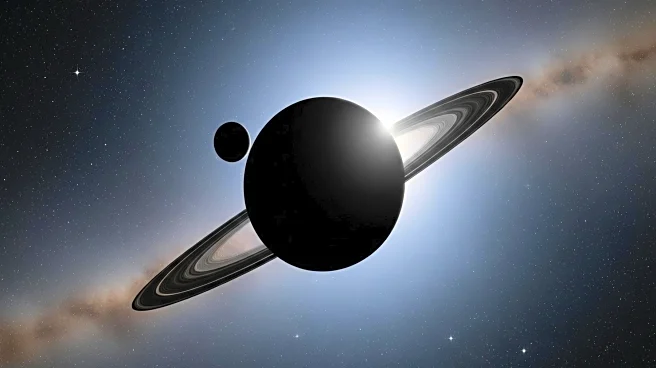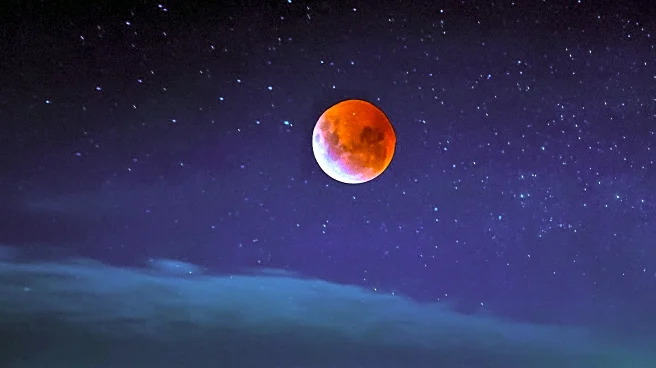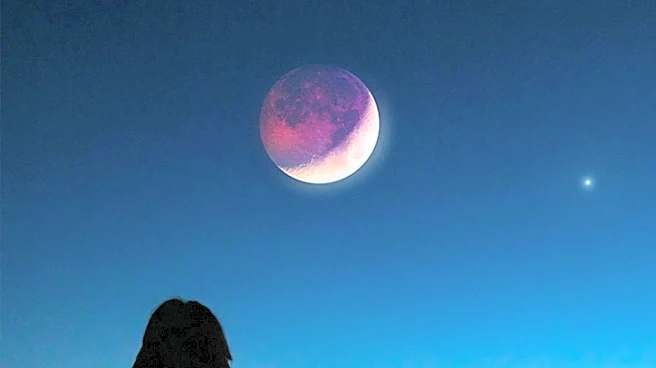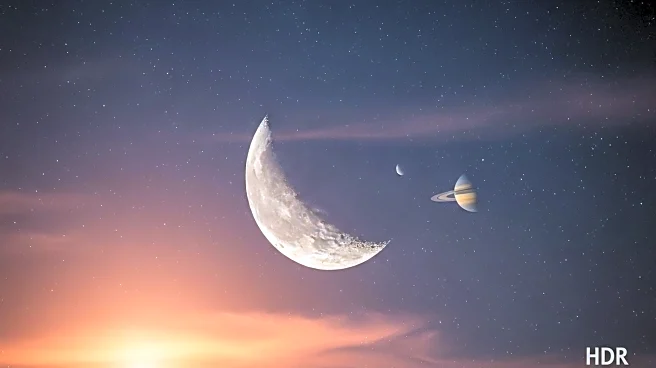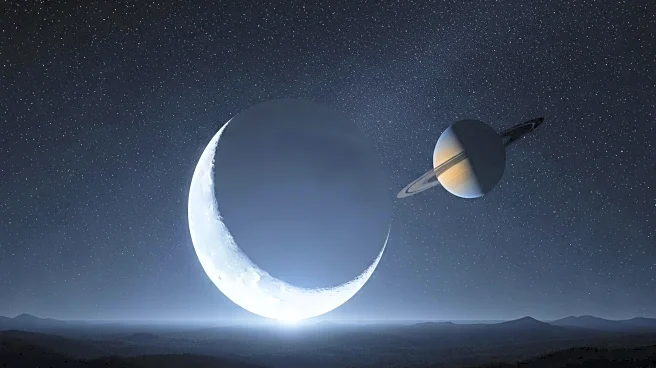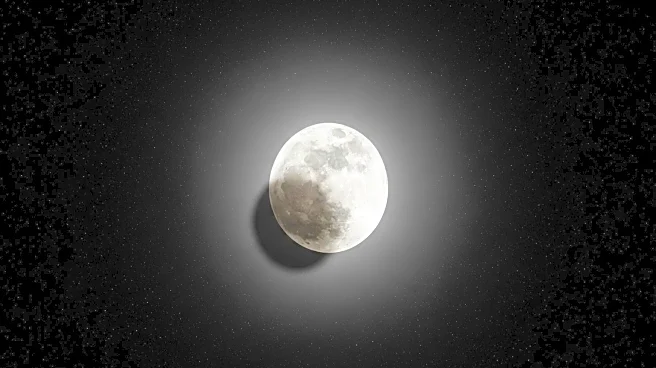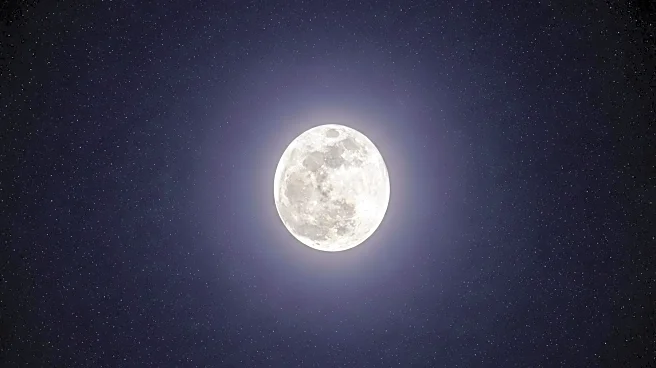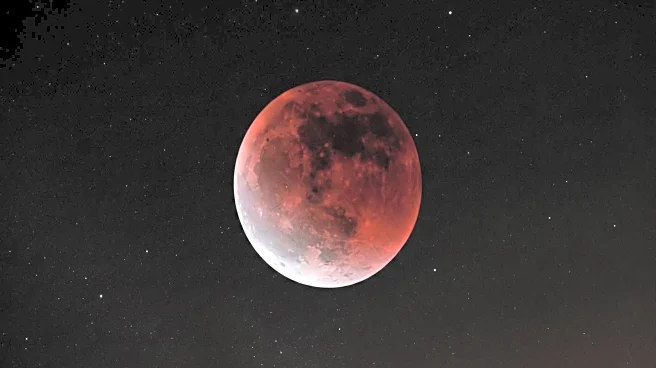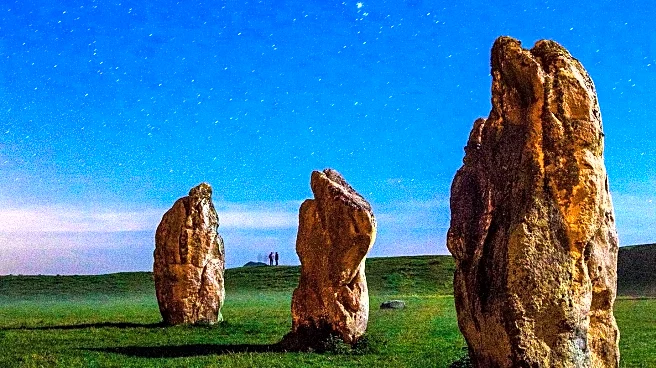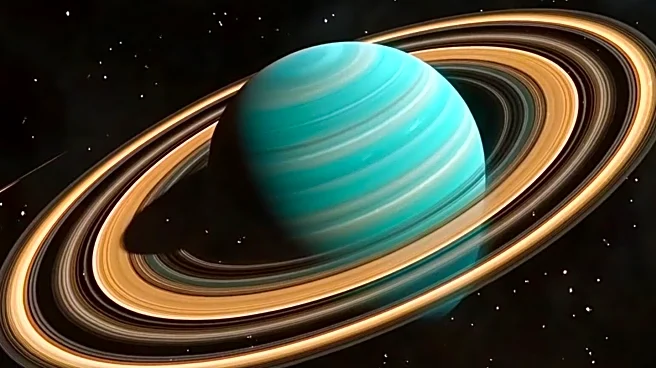What is the story about?
What's Happening?
On September 8, the Moon passed close to the planets Saturn and Neptune, creating a notable astronomical event visible in the night sky. At 4 PM EDT, the Moon was positioned 4° north of Saturn, followed by a passage 3° north of Neptune at 6 PM EDT. Saturn, with a magnitude of 0.6, was visible to the naked eye, while Neptune, with a magnitude of 7.7, required binoculars or a telescope for observation. Both planets were located in the southwestern Pisces constellation, approximately 30° high in the southeast by 11 PM local daylight time. Saturn's disk measured 19” across, with its rings spanning 44” along the long axis. Neptune was situated 2° northeast of Saturn, near a 6th-magnitude field star, facilitating its location roughly half a binocular field from Saturn.
Why It's Important?
This celestial event is significant for astronomy enthusiasts and provides an opportunity for educational engagement with the night sky. Saturn's visibility without optical aid allows for easy observation, while Neptune's proximity to Saturn offers a chance to locate the distant planet with binoculars or telescopes. Such events can stimulate interest in astronomy and science, encouraging public participation in sky watching and potentially inspiring future astronomers. The event also highlights the dynamic nature of planetary movements and their interactions with the Moon, offering insights into celestial mechanics.
What's Next?
Neptune is approaching opposition on September 23, just two days after Saturn reaches its own opposition. This will make both planets particularly visible and well-positioned for observation. Astronomy enthusiasts and educators may plan viewing sessions around these dates to maximize the opportunity for public engagement and education. The upcoming oppositions will provide clearer views of the planets, enhancing the experience for those using telescopes.
Beyond the Headlines
The event underscores the importance of astronomy in understanding our universe and the celestial bodies within it. Observing such events can foster a deeper appreciation for the complexity and beauty of the cosmos. It also highlights the role of astronomy in cultural and scientific education, promoting curiosity and exploration beyond our planet.
AI Generated Content
Do you find this article useful?


